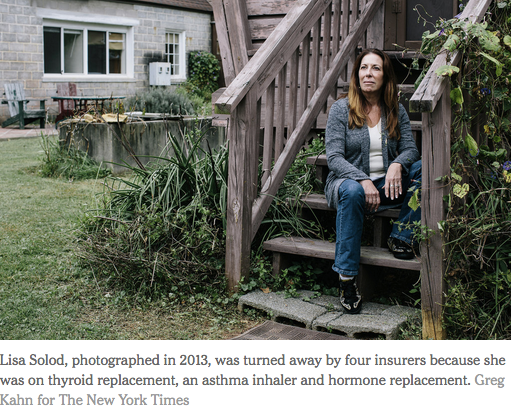But the Republican proposal also raises a more basic issue: Who will decide what constitutes a pre-existing condition?
Before the Affordable Care Act, profit-taking insurers had lowered the bar for what was considered a pre-existing condition to include nearly every malady, making it difficult for many healthy patients to get affordable insurance.
I have interviewed many such people. Renée Martin was thrown into an unaffordable high-risk pool because of an abnormal Pap smear. Lisa Solod got turned away by four insurers because she was on thyroid replacement, an asthma inhaler and hormones — a not uncommon trifecta for women in their 50s. Wanda Wickizer was priced out of having insurance because she had taken Lexapro for depression. Jesse Albert found that he and his family were uninsurable because he had once had a benign skin cancer and a bout of hepatitis C, even though his immune system had cleared the virus.
“Insurers each drew a line in the sand that was invisible for conditions they didn’t want to cover,” said Jean P. Hall, the director of the Institute for Health and Disability Policy Studies at the University of Kansas. “We didn’t even know where that line was because it was considered proprietary information.”




